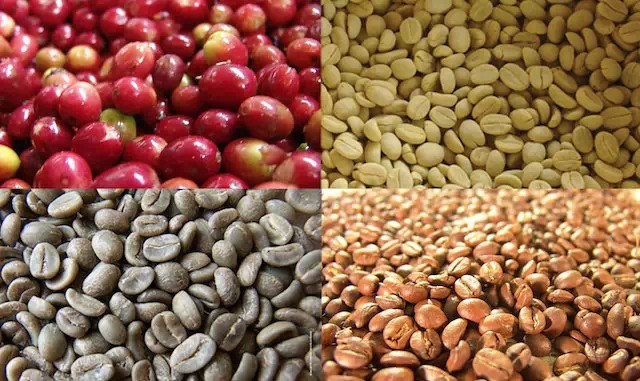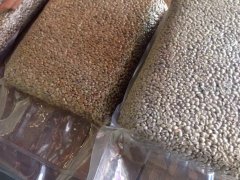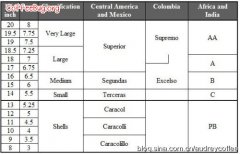How are Ethiopian coffee beans graded?

The classification we are discussing here refers to the classification of beans in the country of origin of coffee. (No matter which country coffee beans are ungraded)
Ethiopian coffee beans are divided into five grades.
The first and second stages are reserved for washed beans.
Grade 1 represents 0-3 defective beans per 300g of raw beans;Grade 2 represents 4-12 defective beans per 300g.
Grade 1(G1) washed beans are extremely rare and difficult to buy. At present, all washed beans exported from Ethiopia are G2 grade.
The quality of sun-cured beans is ranked as G3, G4 and G5. Although G4 has significantly fewer defective beans than G5, coffee farmers claim that in order to save taxes on exports, they often lower the quality of G4 to G5 to save money. This may just be marketing gimmick, in fact, the G5 quality is not as good as the G4.
Ethiopia's beans are easy to identify, most of the beans are small and thin pointed long beans, so-called "long berry", and often mixed with small oval short beans, so-called "short berry", it seems that the size of the beans is uneven.
G4 or G5 commercial bulk beans are mostly mixed with hundreds of different varieties of coffee beans from various producing areas, and the phenomenon of uneven beans is most obvious.
But the beans are not to be judged by appearances. Ethiopian coffee has the most citrus aroma in the world. Whether espresso or hand brewed, it smells tangy orange or lemon when extracted.
On the palate there are intense floral, fruity and sour notes typical of Ethiopia. The biggest drawback is that it is easy to bake unevenly, especially sun beans. Even the best G3 Harald sun-baked beans often have uneven color, and it is most important to taste good.
Important Notice :
前街咖啡 FrontStreet Coffee has moved to new addredd:
FrontStreet Coffee Address: 315,Donghua East Road,GuangZhou
Tel:020 38364473
- Prev

Can the appearance judge whether the coffee beans are fresh? How to observe the freshness of coffee beans
Freshness is the life of coffee, how to determine the freshness of coffee beans? There are three steps: smell, see, and peel. Smell: put the coffee beans close to the nose and smell them deeply to see if you can clearly smell the aroma of the coffee beans. If so, the coffee beans are fresh enough. On the contrary, if the aroma is weak, or the greasy smell has begun to appear, the coffee beans are completely stale.
- Next

10 things to consider before buying raw coffee beans in a cafe
Sellers of raw coffee beans are mainly responsible for grading coffee beans before selling them to coffee bean sellers. After the grading is completed, premium coffee beans and boutique coffee beans will be selected, although they will have some defects but do not affect the coffee rating. These defects are not so serious, but they can also cause potential damage to the quality of coffee. Although Cupping is undoubtedly the most clear way to check coffee beans.
Related
- Guji coffee producing area of Guji, Ethiopia: Humbela, Shakiso, Wulaga
- What is the most expensive variety of Qiloso in BOP multi-variety group?
- How to store the coffee beans bought home?
- Why are Yemeni coffee beans so rare now?
- Ethiopian Sidamo all Red Fruit Sun Sun Santa Vini Coffee beans
- SOE is mostly sour? What does it mean? Is it a single bean? what's the difference between it and Italian blending?
- Is Italian coffee beans suitable for making hand-brewed coffee?
- How to choose coffee beans when making cold coffee? What kind of coffee beans are suitable for making cold coffee?
- Just entered the pit to make coffee, what kind of coffee beans should be chosen?
- Can only Japan buy real Blue Mountain Coffee? What are authentic Jamaican Blue Mountain coffee beans?

